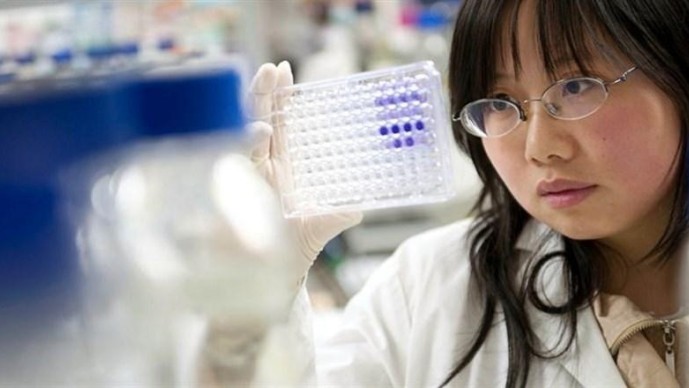Understanding How Gut Microbiota Affect Child Health
- Alexis Katsis, Brad Zamft, Apr 21, 2015

To many of us, diarrhea may seem like an acute condition or minor annoyance. A bad burrito or Chinese food left in the refrigerator a little too long may leave us annoyed, cranky, and perhaps out of work for a few days, but rarely do we worry about the life-long consequences of our gut health and how that impacts our development.
But for children in the world’s poorest places, the repeated bouts of diarrhea they endure can have lasting consequences. The function and structure of their intestinal tracts can become severely affected, leading to a lessened ability to absorb nutrients. It is one of nature’s cruel jokes that those who are often most malnourished, even when they do get precious nutrients, are unable to absorb them efficiently. Even worse, that sustained lack of nutrient intake has severe physiological effects, lowering their growth rate and causing stunting, which in turn is associated not only with an increased risk of mortality from subsequent diarrhea and respiratory infections, but also with decreased cognitive function. Those stunted children start off disadvantaged and continue on a trajectory that places them firmly in the cycle of poverty.
So how does repeated enteric infection cause this decreased gut function, a condition we call environmental enteropathy (also called environmental enteric dysfunction)? Given that the human gut contains tens of trillions of microbial cells, a logical place to start would be to ask how pathogens interact with these microbial cells, a community termed the gut microbiota, and whether that interaction contributes to the pathology of environmental enteropathy.
Inspired by revolutionary advances in the fields of high-throughput omics (the ability to simultaneously study thousands to billions of molecules of DNA, RNA, protein and metabolites) and synthetic biology, as well increased interest in the studying of microbiota, we would like to establish robust models of the interactions between our guts and the microbial communities inside them. Much of this work has been done using animals grown in completely sterile conditions, allowing researchers to establish defined microbial communities within their digestive tracts. These "gnotobiotic" animal models have resulted in many interesting findings. But this is an additive experiment - defined microbial communities are added to sterile guts. An opposite way of investigating the problem would be through a subtractive experiment, wherein one takes an already-functioning microbial community and attempts to modify it through the attenuation of a subset of the population.
What is needed, then, is a way to make specific, tunable changes to the microbial communities present in the human gut or in animal models of the human gut. These changes should not affect the gut function directly. This will also require the development of sophisticated computational tools to accurately measure those changes and model the underlying mechanisms that are their cause, both in the microbial communities and the gut’s response to them. Enter bacteriophages.
Bacteriophages are essentially viruses for bacteria. They are specific for individual species of bacteria and do not directly interact with human cells (there are some indirect effects, e.g. endotoxin release and inflammation, that must be taken into account when considering bacteriophage strategies). These biological players have been around for nearly as long as the bacteria have been, and have historically been used extensively in both the academic studies of bacterial physiology and as therapeutic agents. But more efficient means of modifying bacterial genomes resulted in a decrease of their use in academic circles, and the advent of modern antibiotics has greatly reduced the research support aimed at using them as therapeutics.
We at the Bill & Melinda Gates Foundation see this as an opportunity to work with partners to both bring needed support to this independent strategy to modifying bacterial communities, and accelerate the research aimed at addressing the progression of environmental enteropathy and stunting. We see an old technology, and new advances in synthetic biology, systems biology, bioinformatics, and high-throughput assays, coming together in an opportunity to advance the understanding of how the microbiota of the most disadvantaged children may affect their future. We are therefore excited to introduce one of our new Grand Challenges Explorations topics: Addressing Newborn and Infant Gut Health Through Bacteriophage-Mediated Microbiome Engineering. In this call we ask researches to send us their best ideas on using bacteriophages to modify gut microbiota, so that we can understand better its impact on gut function. We are quite broad in what we are interested in seeing, allowing the researchers to dictate the most pressing problems in this area. We are open to novel formulations of bacteriophage, sophisticated models of gut function under microbiotic disruption, strategies addressing endotoxin production, and many other challenges to this problem. Finally, systems-level solutions aiming to fully implement rational modeling and/or engineering of the microbial communities present in our guts are of special interest.
We hope you all in the community can help us on this very important and difficult problem. Submit your great ideas here!